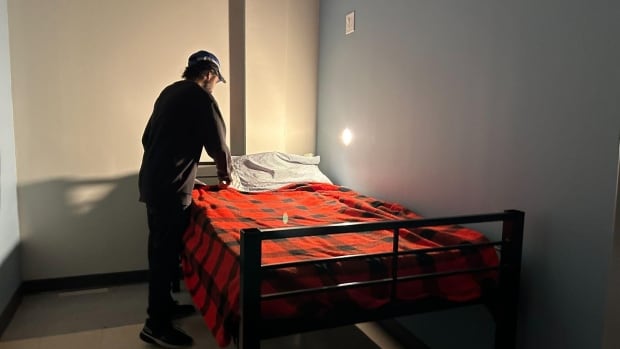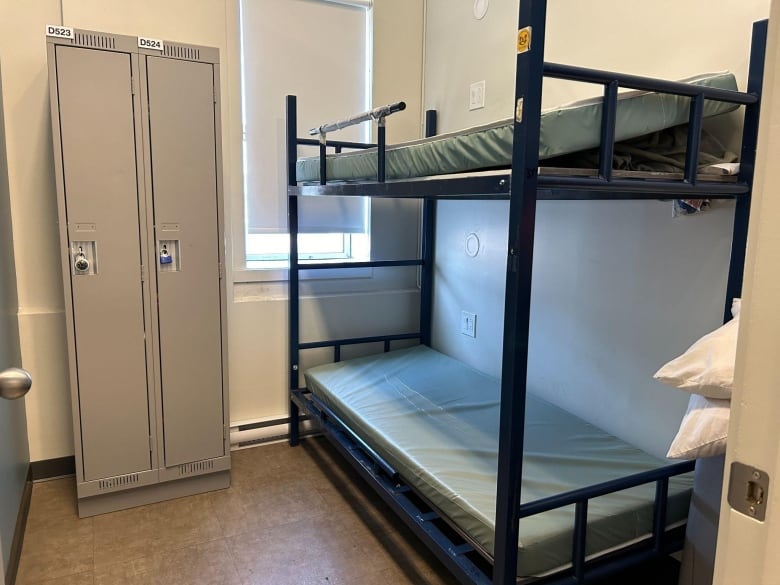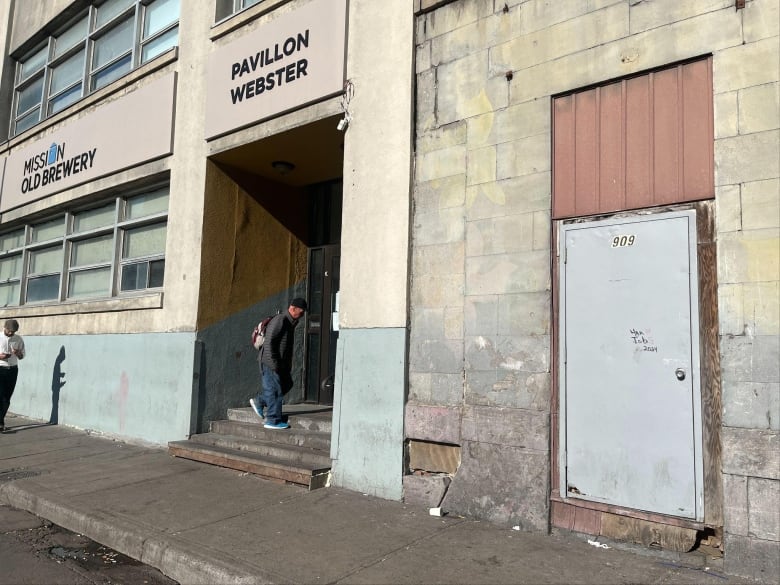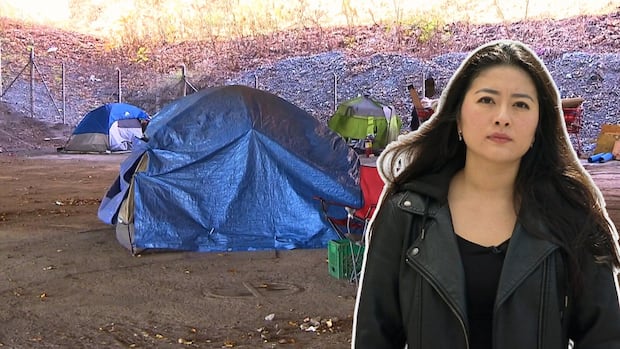
In his small room with a single bed, Rohit can hang his coat, charge his phone and store his clothes in a locker.
It’s not much, but it’s a start, he says, after struggling to find his footing in Quebec since arriving from India as a student in 2019.
“You can shut the door,” he said. “You have privacy.”
Only months ago, this same space was part of an open dormitory in a homeless shelter crammed with as many as 30 men in bunk beds.
Now, it has been divided into more than a dozen private and semi-private rooms, referred to by staff as “chambrettes.”
The same change has been made across the five floors of the Old Brewery Mission’s Webster Pavilion, Montreal’s largest emergency shelter for men.

This has meant a slight reduction in capacity for the previously 185-bed shelter, but workers say it was a crucial step.
The transformation, which took place gradually over about eight months, was made possible by a $1 million donation from The Church of Jesus Christ of Latter-day Saints. The new rooms were inaugurated at a news conference on Friday.
The Old Brewery Mission made the same change at its women’s shelter, the Patricia Mackenzie Pavilion, last December.
“It’s just a sense of dignity — having your own plug [to charge your phone], your own light, being able to rest if you work,” Mila Alexova, the co-ordinator of outreach services at the Old Brewery Mission, said while giving CBC News a tour a day before the announcement.
“It’s kind of basic needs in a human.”
Changing shelters
As elsewhere in Canada, the number of people experiencing homelessness in Montreal has exploded since the pandemic.
Between 2018 and 2022, the latest government data available, the number of homeless people across the province doubled to roughly 10,000. About half of them are based in Montreal.
Staff at the Old Brewery Mission say that number has only grown, and the true number is likely far higher. An estimated 20 per cent of the city’s homeless spend their nights outside.

In her outreach work, Alexova meets with a lot of people reluctant to go to a shelter. Some of them prefer to stay in one of the encampments that have become common across the city.
Alexova began working at the mission nearly four years ago, and continued through the pandemic. The threat of illness made people even more hesitant about being in a dorm setting, she said.
Alexova recalled stressful nights when staff had to go from bunk to bunk, taking people’s temperatures and listening for coughing.
“A lot of clients will tell you there’s no way they are sleeping in dormitories,” she said.
A step toward permanent housing
Providing a welcoming space at the emergency shelter is one way to help people experiencing homelessness take the first step toward permanent housing, she said.
“We also see a lot of improvement for clients that have health issues and mental health issues,” she said.
Benoît Martin, another client, first stayed at the shelter last January, in a room with more than a dozen people.
He said the room he now shares with one other person “makes all the difference” as he tries to find a permanent place to live and deal with his drinking problem.

The Old Brewery Mission, which began as a soup kitchen 135 years ago, is focused increasingly beyond its shelter walls, with more long-term housing and outreach programs.
Some clients can stay for months in one of the rooms as they work with staff to come up with a plan for their next steps.
James Hughes, the Old Brewery Mission’s president, said the quieter, more peaceful setting has made it easier to focus on what’s next for clients.
“It’s very difficult when someone is just a few feet from you in a dormitory type space,” he said.
“That permits us to say, ‘OK, what, what are we going to do next? Because this is not the future for you here. This is the present and it’s better than you where you were, but let’s work hard on getting you to a better place.'”
Rohit, who requested not to be identified by his full name because his family doesn’t know his situation, said he developed a drinking problem after arriving in Canada to study.
He stayed in a dorm with more than two dozen people when he first arrived at the shelter, more than a year ago. He said it was loud and difficult to sleep.
Rohit said his current living situation gives him the space to think about what could be next.
WATCH | Where do people go when encampments are dismantled?:
The City of Montreal has intervened in 460 homeless encampments in the past year. And with warm weather on the way, front-line workers are expecting to see more.
